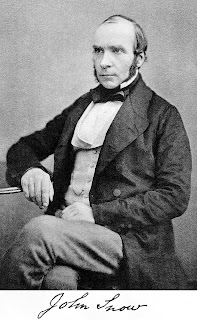I have a love/hate relationship with Heathrow Airport.
If I’m standing in Arrivals, it’s the greatest place in the world because I’m waiting for my fiancé. John lives in America (in Minnesota, if you know your states), so we only get to see each other every eight weeks or so.
I get there for the time that his flight lands and strategise and elbow my way to the front of the silver barriers, then spend the next 60 minutes anxiously scanning the faces of people pushing trolleys, dragging kids and shivering in shorts until I see him.
This also gives me the chance to watch other people’s reunions, which is the best way to pass time when you’re a nosy people-watcher in a good mood. Last time a family with Northern accents had brought along a scarecrow called Tommy, and I watched a tanned, slightly dazed-looking teenager run straight into his parents’ outstretched arms. You only get that in movies or episodes of Parenthood or at the airport.
There are all these mini heart-lurching moments while you wait, like when you think a man with a similar haircut could be him but isn’t, or that guy who has a red hoody is him but isn’t, and then suddenly John is there, walking towards me with a massive grin.
There’s nothing like that first hug after eight weeks apart.
Imagine holding your breath and ducking under water. Your heart is still pumping but your whole body starts prodding you to get oxygen. Your lungs burn and your brain struggles to focus on anything other than breathing.
When you resurface and take that first enormous gulp of air, you understand how completely brilliant and perfect being able to breathe is. Seriously, WOW. You feel alive, in the most basic but fantastic way. Of course, after the first couple of minutes it becomes less amazing and just regular, the way you’re supposed to live – until the next time someone throws you into the water.
After that first hug it’s like we’re continuing from the last day we saw each other. He’ll hold my hand while he tells me about the annoying guy on the plane; one of us buys coffee from Costa and the other gets a table; we get on the Tube to Central with the suitcases, and laugh at adverts.
We always have that invisible link that you carry around with everyone you love even when you’re on your own, like a notebook of names, photos and facts about them stored in your heart. Even if you’re just thinking about whether you remembered to buy grapes or what was the name of that actress in that thing, the notebook is still safe in you somewhere. It opens up when you get a message from them or you find a stupid t-shirt slogan you think they would laugh at, or see a weird-looking cat that you want to tell them about. Sometimes, when you miss them, you open it up yourself and flick through conversations, snapshots and memories.
Another way of thinking about our relationship when we’re not physically together is that it’s like a shared folder on Google Drive. It floats somewhere in this thing we know as the Cloud, and while the thing it is – the folder icon we see on our screens – is intangible, it does exist. It also has 3D components scattered around the world, in the form of server centres and wires, whose unique properties can be matched up to form that thing we know functions and operates and is completely real, even if we can’t poke it or pick it up.
The weeks in between go in phases. Often weekends are harder than days when you can force your brain to think about work for eight hours. Being busy is the aspirin to your headache. In week one you reluctantly relearn your solo routine, resenting something that seemed so normal just eight days ago. By week two that muscle memory has come back and you go into autopilot.
Weeks three to five you waver between anger, sadness and being OK. You find films to watch, meet up with friends and family, read, walk, run, see art and photography, and that stuff makes it better. Weeks six to seven you finally have a sizeable chunk to look back on and you realise you only have two more weeks to go and it's like waking up on the first sunny day.
Week eight feels like some arsehole hit the breaks so it takes forever, as you find yourself counting days and then hours.
The good thing about having to go over an ocean and some more land and stuff to see each other is that we’ve been able to travel to different cities and stay in lots of hotels. I love hotels. There’s something so luxurious about being able to walk from your bedroom into your bathroom without having to put clothes on, and the TV is right there and you only have one suitcase and someone else is cleaning your sheets.
But while those adventures have been great fun, what I miss the most are everyday things. Cooking pizza together is this big culinary project, as is going to the supermarket, driving for seven hours to Chicago while listening to morbid episodes of Serial, and just hanging around reading or watching Netflix with my feet warming up on his legs.
I can leave a room and come back thirty minutes later and he’ll still be there. I go to sleep and when I wake up I reach over and he’s warm and solid right next to me, not just a voice on a cold plastic phone connected by a dodgy WiFi signal.
Even seeing ourselves together in photos is this weirdly intriguing experience, like going back in time and showing a Roman what he looks like with a camera, because it’s this visual proof that we existed in the world in the same space at the same time. Plus, hey, there’s the Tower of London, that was fun, and damn, my hair actually looked so good that day.
And then suddenly, just as you get used to this solid, 3D life – to the oxygen you were missing – you’re back in an airport and this time it’s the Departures gate. You take one more deep breath – one more hug, one more kiss, one more moment to feel on your skin and hold onto – and then you say goodbye, turn to leave, and you take the plunge again.

















